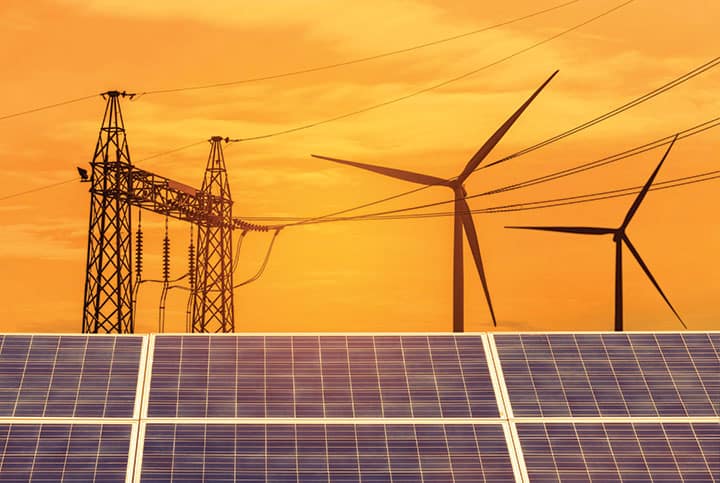The rising use of solar PV and battery storage technology poses new challenges for the industry to overcome. For example, the increased use of solar and battery can result in high and fluctuating voltage which can exceed the capacity of the distribution network systems. ARENA and CSIRO have recently completed a study into the next generation of Virtual Power Stations and how they can coordinate systems to reduce the impact on distribution networks.
Left unchecked, the strain that solar and battery power create for the distribution networks could result in restrictions being placed on the amount of PV-based electricity connected to the grid, limiting customer choice and the amount of clean energy in Australia.
A quick change in weather conditions can cause voltage to fluctuate dramatically, resulting in issues with power quality. Other renewable energy sources, such as wind power, have similar issues with fluctuating voltages. Without an integrated solution, the mass-deployment of distributed solar PV is not always embraced by some network industry stakeholders. ARENA and CSIRO sought to address this compelling global problem.
Virtual power station 2
ARENA contributed $850,000 to the $2.85 million research project to create virtual power station 2 (VPS2), which builds upon CSIRO’s original virtual power station and has the ability to undertake pilot-scale testing of load, generation and energy storage coordination.
The VPS2 project was broken down into four work streams:
- Modelling and simulation: The project developed suitable network simulation models to assess the performance of different control strategies, ultimately assessing Australia-wide impacts and benefits of proposed solar management solutions. The early models were extended to incorporate representations of key controllable loads within customer sites.
- Control system design: The project developed a coordinated control system for managing loads, energy storage and reactive power at individual sites. Managing power quality and avoiding energy wastage will provide an immediate financial benefit to consumers in constrained network areas.
- Aggregator system design (multi-site): It worked on interface and coordination algorithms, suitable for use by energy service providers, allowing aggregation of multiple individual sites to provide reliable and location specific network services. This gives distributors a viable alternative to PV restrictions or distribution network upgrades.
- Pilot deployment: Following initial testing at the Renewable Energy Integration Facility, the VPS was deployed at a pilot scale (50-100 individual sites) in a new Lend Lease residential development. The pilot was maintained for one year, with high-resolution data on the network power quality and solar PV hosting capacity made publicly available and promoted in a series of technical and academic publications, plus industry forums.
Yarrabilba energy trial
Project partner Lend Lease identified a suitable test site at Yarrabilba, approximately 30 minutes south of Brisbane. CSIRO and Lend Lease approached residents who agreed to take part in the trial.
In this trial, 67 households were recruited and their hardware (solar PV, batteries and air-conditioners) were controlled in a cooperative manner to maintain power quality in the grid. The results of this project have shown that a viable third alternative to electrical network upgrades or limits on rooftop solar can be found in smart deployment of hardware and software to effectively control devices, enabling greater deployment of solar power.
Overall, the VPS2 project was a success – it demonstrates the fundamental ability of the underlying technology.
Next steps for virtual power stations
In addition to the valuable lessons learnt, the research project identified a number of steps that are required to optimise the use of distributed energy resources. These include:
- Continued development of communications infrastructure underlying the core control technology to provide more granular control of all devices at homes
- Additional validation of the fundamental approach is needed both from a technical and a commercial perspective CSIRO needs to demonstrate the ability of the VPS2 approach to actually impact distribution operations in the field; to date, the project has demonstrated the ability to impact individual connection points and modelled impacts on distribution operations
- Incentive schemes and approaches need to be introduced to ensure sufficient uptake of the proper inverters, storage and controls to actually lead to deployments that cost-effectively meet alternatives for solving the grid issues that arise from
increased levels of solar PV
CSIRO and ARENA are hoping that once it reaches the commercial market, the VPS2 will provide a reliable mechanism for matching locally-generated PV electricity with household demand, while offering a way to develop and share information on the economic benefits between all parties.














